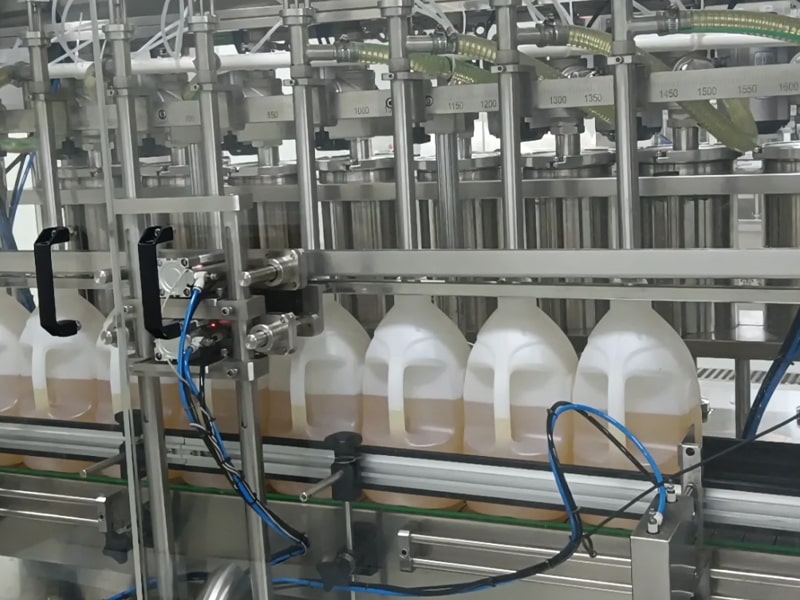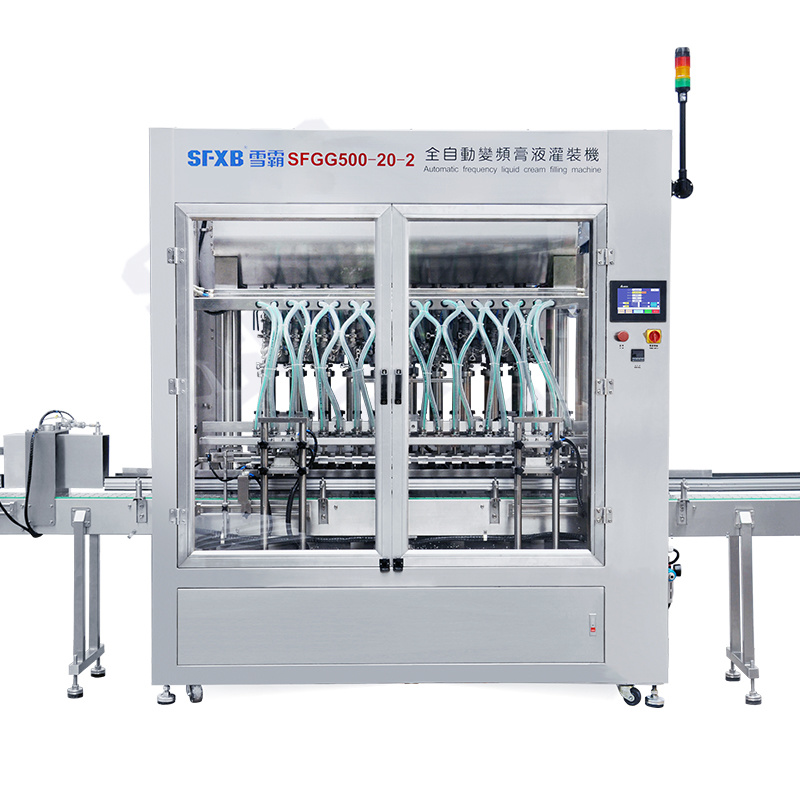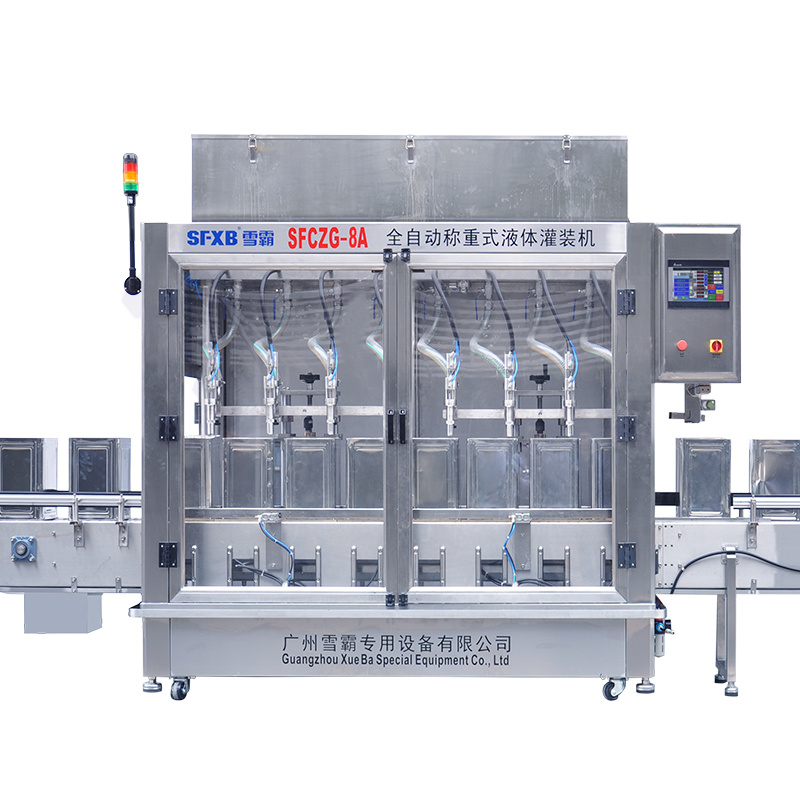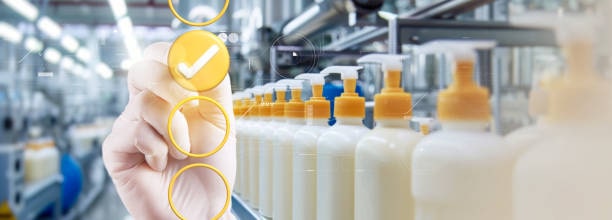In the dynamic landscape of modern manufacturing, efficiency, accuracy, and hygiene are paramount. As businesses strive to meet increasing demands while minimizing costs, the adoption of automated solutions has become not just advantageous, but often essential. Among these crucial technological advancements, automatic filling machine stands out as a cornerstone for numerous industries, from food and beverage to pharmaceuticals, cosmetics, and chemicals. This sophisticated machinery streamlines the packaging process, ensuring consistent fill levels, reducing product waste, and significantly accelerating production throughput.
The benefits of automatic filling machine are manifold. It facilitates automated and standardized production, dramatically enhancing filling efficiency and helping enterprises realize substantial savings in labor costs. Furthermore, automation mitigates the risk of cross-contamination inherent in manual packaging processes, thus safeguarding product safety and integrity. However, given the vast array of products and packaging requirements, a one-size-fits-all approach to filling equipment is rarely sufficient. This is where the concept of customizing automatic filling machine becomes crucial.
This comprehensive guide will delve into the intricacies of customizing automatic filling machine, providing a roadmap for businesses seeking to optimize their packaging operations. We will explore the key considerations, the customization process, and the benefits of partnering with a reputable manufacturer to achieve a tailored solution that perfectly aligns with your unique needs.

Understanding the Foundation: Why Customization Matters in Automatic Filling
While standard automatic filling machines offer a basic level of automation, they may not fully address the specific characteristics of a particular product, the nuances of its packaging, or the desired production volume. Customization allows for the fine-tuning of equipment parameters and functionalities to perfectly match these variables, leading to superior performance and greater return on investment.
Imagine a company filling highly viscous sauces into oddly shaped containers, or a pharmaceutical manufacturer requiring aseptic filling for sensitive liquid medications. A generic filling machine might struggle with the viscosity, damage the containers, or fail to meet the stringent hygiene standards. Custom automatic filling machine, however, can be designed with specialized pumps, filling nozzles, container handling systems, and sterile environments to handle these specific challenges effectively.
Beyond simply handling the product, customization can encompass the entire filling *line*. This can involve integrating various stages such as bottle washing, bottle blowing, drying, capping, labeling, packing, and coding. A fully integrated, customized automatic filling line eliminates the need for manual intervention at almost every step, creating a seamless and highly efficient workflow. While the initial investment for a full line might be higher, the long-term benefits in terms of labor savings, increased throughput, and reduced errors can be substantial. Even businesses with a more limited budget can benefit from customizing individual filling machines to better suit their specific product and production needs.
The Blueprint for Success: Key Considerations for Customizing automatic filling machine
Before embarking on the customization journey, a thorough understanding of your product and production requirements is paramount. This foundational step ensures that the customized equipment precisely addresses your operational needs. Here are the critical factors to consider:
Product Characteristics: The nature of your product is the most significant determinant of the filling technology required.
● Viscosity: Liquids, gels, pastes, and powders all require different filling methods and pump technologies. A thin liquid might use gravity filling, while a thick paste might need a positive displacement pump.
● Consistency: Is your product uniform, or does it contain particulates? This affects the nozzle design and potential for clogging.
● Foaming Tendency: Products that tend to foam require specialized anti-foaming nozzles and filling techniques to avoid overfills and product loss.
● Corrosiveness or Reactivity: Certain chemicals or food products can be corrosive or reactive, necessitating the use of specific materials for contact parts, such as stainless steel or specialized plastics.
● Temperature: Hot or cold filling processes require equipment designed to handle temperature variations and maintain product stability.
● Aseptic Requirements: For sensitive products like pharmaceuticals or certain food items, aseptic filling is crucial to prevent microbial contamination. This involves specialized equipment and processes to maintain a sterile environment.
Packaging Specifications: The type and size of your containers are equally important in determining the design of the filling equipment and line.
● Container Type: Bottles, jars, pouches, tubes, cans, and bags each have unique handling and filling requirements.
● Container Material: Glass, plastic, metal, and flexible packaging require different handling mechanisms to prevent damage.
● Container Size and Shape: The dimensions and geometry of your containers influence the spacing, indexing, and stability of the filling process.
● Neck Opening: The size and shape of the container opening impact the design of the filling nozzle and potential for splashing or spillage.
Production Requirements:
● What is your target production speed (containers per minute or hour)?
● What is your desired fill volume range? What is the required accuracy of the fill?
● What are your current and projected production volumes?
● What are your operational hours (single shift, multiple shifts, 24/7)?
● What are your quality control requirements and tolerances?
Facility Considerations:
● How much floor space is available for the filling line?
● What are the ceiling height limitations?
● What is the power supply availability and voltage?
● Are there specific environmental conditions (temperature, humidity) to consider?
● Integration with Existing Systems: If you have existing packaging or production equipment, it’s important to consider how the new automatic filling machine will integrate seamlessly into your current workflow.
● What is your budget for the equipment?
Regulatory Compliance: Certain industries, such as pharmaceuticals and food and beverage, have strict regulatory requirements (e.g., FDA, GMP) that automatic filling machine must meet. Customization can ensure compliance with these standards.
 |
 |
 |
The Journey to Tailored Efficiency: The Customization Process
Once you have a clear understanding of your requirements, the customization process typically involves a collaborative effort between your company and the automatic filling machine manufacturer. A reputable manufacturer will guide you through each stage to ensure a successful outcome.
1. Initial Consultation and Needs Assessment: This is the crucial first step where you communicate your product characteristics, packaging specifications, desired production volume, and any specific challenges you face. The manufacturer’s team of experts will listen attentively, ask probing questions, and gather all the necessary information.
2. Concept and Design Development: Based on the needs assessment, the manufacturer’s engineering team will develop initial concepts and detailed designs for the customized automatic filling machine or line. This may involve creating technical drawings, 3D models, and flow diagrams to visualize the proposed solution.
3. Proposal and Quotation: The manufacturer will present a detailed proposal outlining the proposed equipment, its features, specifications, and the associated costs. This is an opportunity for you to review the proposal, ask clarifying questions, and request any adjustments.
4. Engineering and Manufacturing: Upon approval of the proposal, the manufacturer will proceed with the detailed engineering and manufacturing of the customized equipment. This involves sourcing components, fabricating parts, and assembling the machinery according to the approved designs.
5. Factory Acceptance Test (FAT): Before shipment, a Factory Acceptance Test (FAT) is typically conducted at the manufacturer’s facility. This allows your team to inspect the equipment, witness it in operation, and verify that it meets all the agreed-upon specifications and requirements.
6. Site Installation and Commissioning: Once the equipment is shipped to your facility, the manufacturer’s technicians will assist with the installation and commissioning process. This involves setting up the equipment, connecting utilities, and performing initial testing to ensure proper functionality.
7. Training: Comprehensive training is essential to ensure that your operators and maintenance personnel can effectively operate and maintain the customized automatic filling machine. Reputable manufacturers provide thorough training programs.
8. After-Sales Support: Ongoing after-sales support is crucial for ensuring the long-term reliability and performance of your customized equipment. This includes technical assistance, spare parts availability, and potential maintenance services.
The Unquestionable Value: Benefits of Partnering with a Professional Manufacturer
Successfully customizing automatic filling machine relies heavily on partnering with a professional and experienced manufacturer. A reputable manufacturer offers a range of advantages that contribute to a successful outcome:
● Expertise and Experience: Professional manufacturers possess deep industry knowledge and extensive experience in designing, manufacturing, and customizing automatic filling machine for various applications. They can provide invaluable insights and guidance throughout the process.
● Comprehensive Solutions: The best manufacturers offer a full suite of services, from R&D and design to manufacturing, sales, and after-sales support. This integrated approach ensures a seamless process and provides a single point of contact for all your needs.
● Tailored Design Capabilities: A professional manufacturer has the engineering capabilities to design and build equipment that precisely meets your unique product, packaging, and production requirements.
● Quality and Reliability: Reputable manufacturers prioritize quality and utilize high-quality materials and components in their equipment, ensuring reliability and longevity.
● Compliance and Standards: Experienced manufacturers are well-versed in industry regulations and standards, ensuring that the customized equipment complies with all necessary requirements.
● Installation and Training: They provide expert installation services and comprehensive training to ensure that your team can operate the equipment safely and effectively.
● Ongoing Support and Maintenance: A strong after-sales support system ensures that you receive timely assistance, spare parts, and maintenance services to minimize downtime and maximize the lifespan of your equipment.
● Reduced Risk: Partnering with a professional manufacturer minimizes the risks associated with investing in complex machinery. They stand behind their products and provide the necessary support to ensure your success.
Avoiding Pitfalls: Why Finding the Right Manufacturer Matters
Choosing the wrong manufacturer can lead to significant challenges and setbacks. Issues such as poorly designed equipment, manufacturing defects, inadequate support, and failure to meet specifications can result in costly downtime, product loss, and operational inefficiencies. Therefore, it is crucial to conduct thorough research and due diligence when selecting a manufacturer. Look for manufacturers with a proven track record, positive customer testimonials, and a commitment to quality and customer service.
Beyond the Machine: The Impact of Customized Automatic Filling Lines
While individual customized filling machines offer significant benefits, the true power of customization lies in creating a fully integrated automatic filling line. As mentioned earlier, these lines can encompass a wide range of processes, from upstream bottle preparation to downstream packaging and labeling. The advantages of a custom automatic filling line are profound:
● Maximized Efficiency: A seamless flow of product through the entire line eliminates bottlenecks and significantly increases overall production speed and throughput.
● Reduced Labor Dependence: A fully automated line requires minimal human intervention, freeing up labor for other tasks and reducing labor costs.
● Improved Consistency and Accuracy: Each step of the process is precisely controlled, ensuring consistent filling, capping, labeling, and packaging, leading to higher product quality and reduced waste.
● Enhanced Hygiene and Safety: Automation minimizes human contact with the product and packaging, reducing the risk of contamination and improving overall hygiene and safety.
● Increased Flexibility: While customized for specific needs, integrated lines can often be designed with some degree of flexibility to accommodate variations in product size or packaging types.
● Real-time Monitoring and Control: Modern automatic filling lines often include sophisticated monitoring and control systems, providing real-time data on production performance and allowing for immediate adjustments.
For companies seeking to achieve truly world-class production efficiency, investing in a customized automatic filling line is a strategic decision that yields significant long-term benefits.

Conclusion: Investing in Tailored Automation for a Competitive Edge
In today’s competitive marketplace, optimizing production processes is no longer a luxury but a necessity. Customizing automatic filling machine and lines offers a powerful solution to enhance efficiency, improve product quality, reduce costs, and ensure regulatory compliance. By carefully considering your product characteristics, packaging specifications, and production requirements, and by partnering with a professional and experienced manufacturer, you can unlock the full potential of automation.
Investing in tailored automatic filling solutions is an investment in the future of your business. It enables you to meet increasing demand, maintain high product standards, and gain a significant competitive edge. The journey to customized automatic filling machine may seem complex, but with the right approach and the right partner, it is a rewarding process that leads to optimized production and lasting success. Don’s hesitate to explore the possibilities of customization and discover how it can transform your packaging operations.
By understanding “How to Customize automatic filling machine,” businesses can make informed decisions that lead to highly efficient, reliable, and cost-effective packaging solutions, ultimately contributing to their growth and profitability. The expertise of a reputable manufacturer like SFXB (https://www.xuebapack.com/) is invaluable in navigating this process and achieving the perfect automated filling system for your unique needs.
| References: | |
| 1. | 《Global Filling Machines Market By Filling Machines, By Packaging Format, By Capacity, By Geographic Scope and Forecast》 Retrieved from:KBV Research ; |
| 2. | Aseptic Automatic Filling Machine Market Trends, Top Companies, Share, Growth And Forecast 2033 Retrieved from:openpr; |






Comments